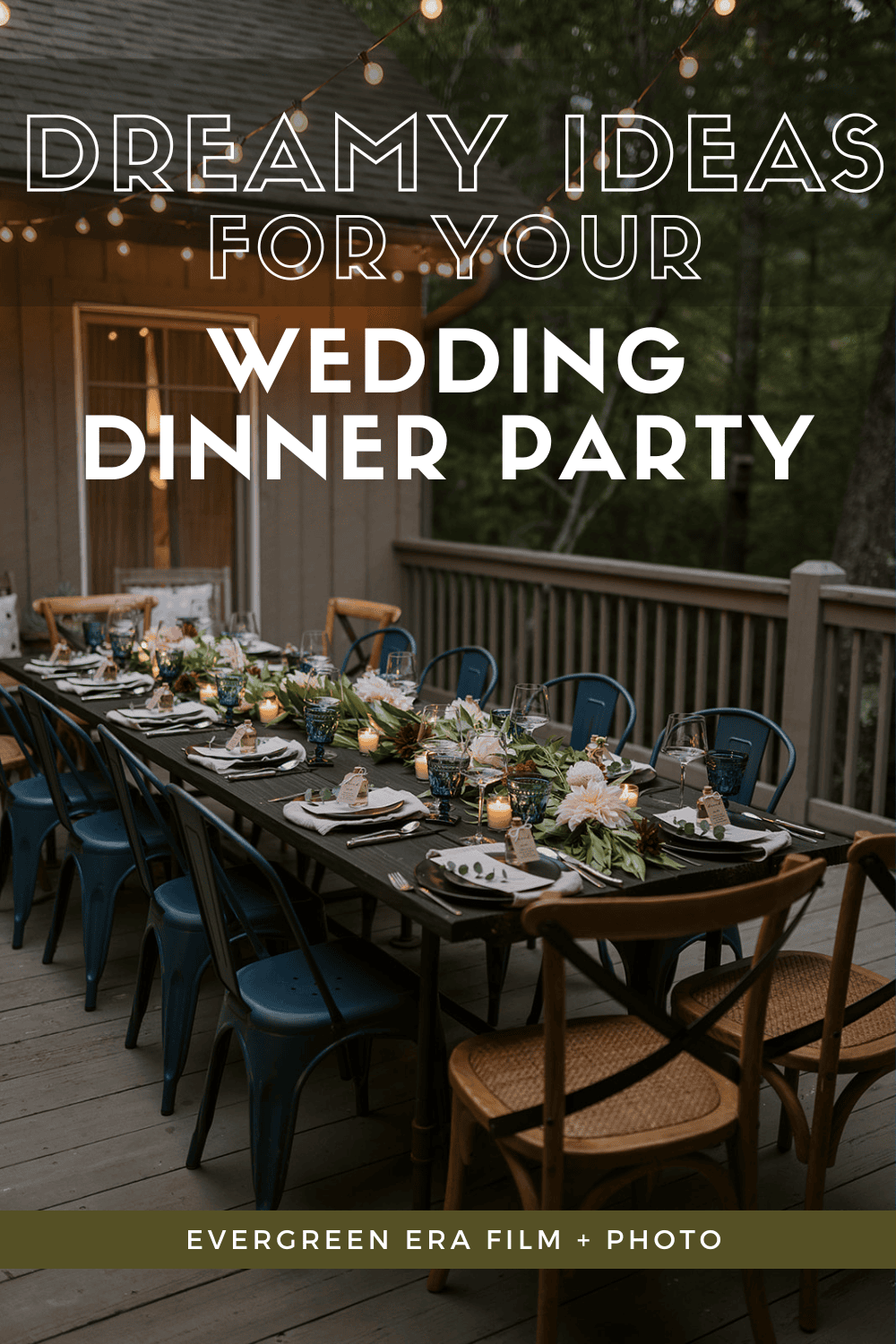Evergreen Era Film + Photo
Our national parks offer some of the most picturesque, straight up breathtaking scenery in the country. That’s why they’re national parks—to preserve America’s most beautiful landscapes and to share them with generations of visitors. Maybe that’s why you want to have a National Park wedding! Maybe you’re wondering if that is even possible! Well, I’m excited to tell you that it is!
There are 61 national parks spread across 29 states and two U.S. territories, from the tip of Alaska to the Florida Keys, covering every kind of terrain imaginable. Those stunning views also make for some pretty spectacular backdrops for your wedding vows!
Some of my favorite National Park Wedding Locations
Redwoods National Park
California
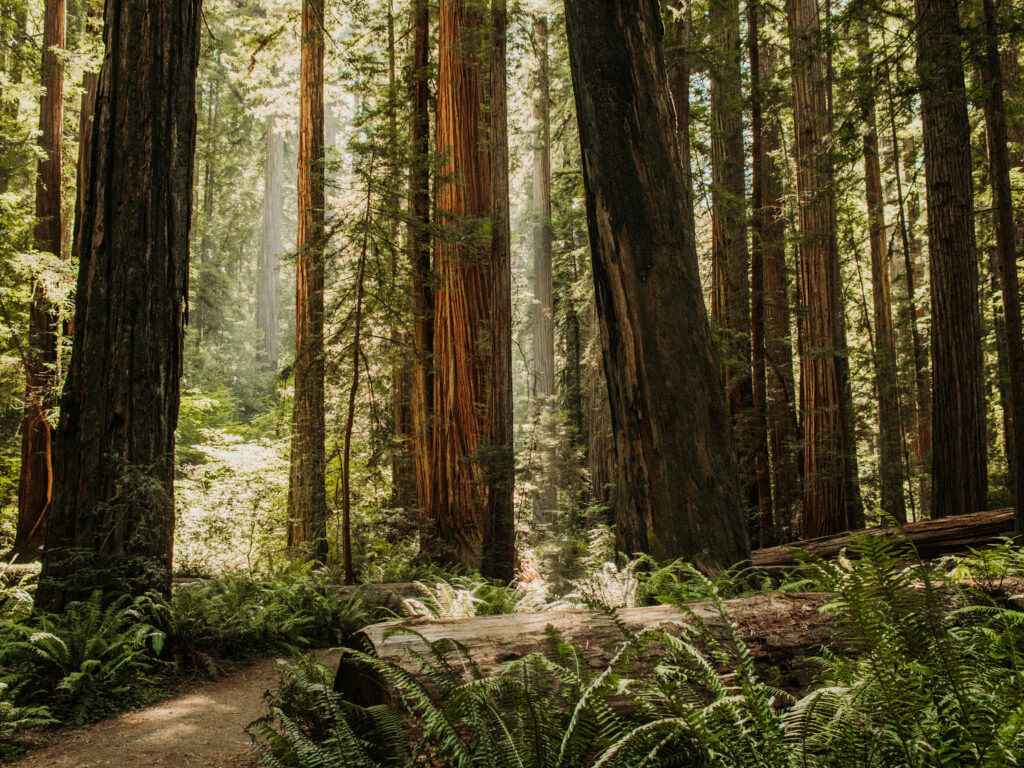
Mount Rainier National Park
Washington
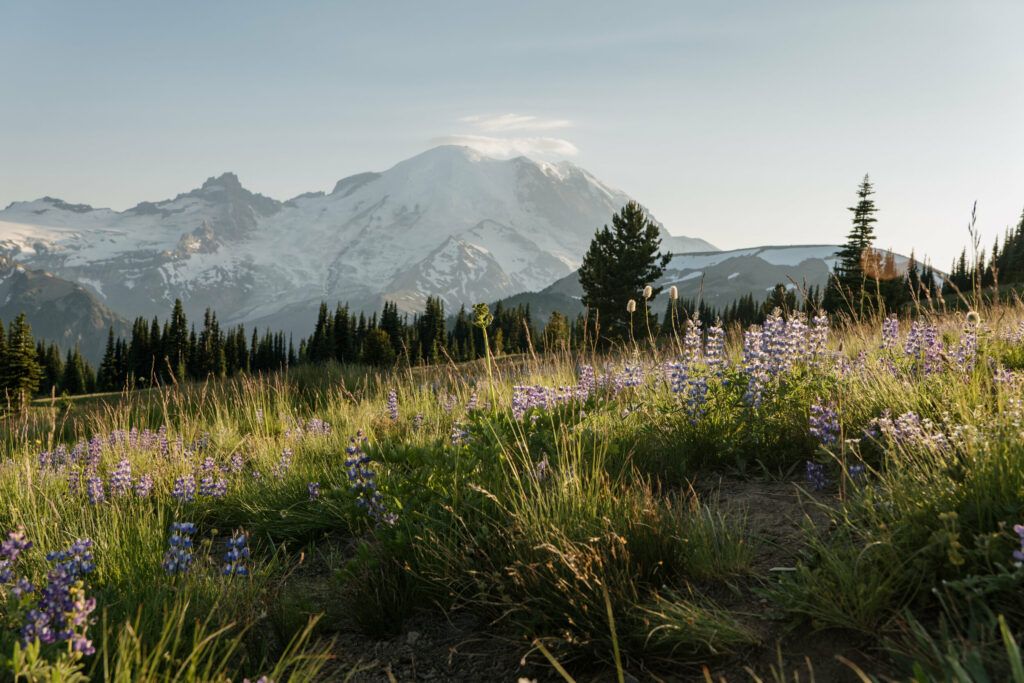
Crater Lake National Park
Oregon

Shenandoah National Park
Virginia
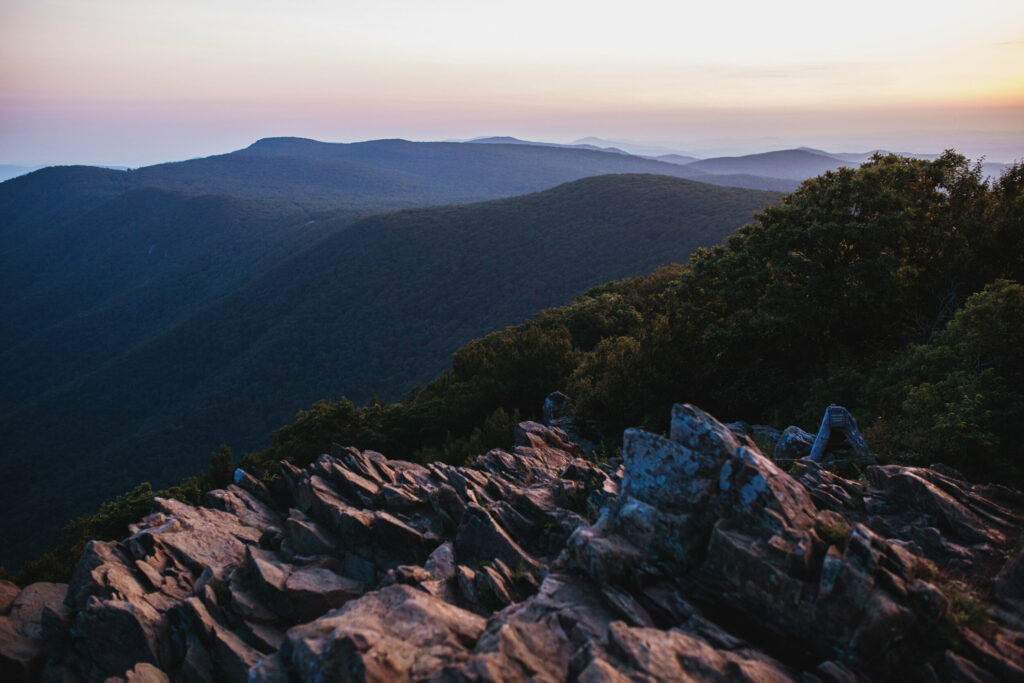
Rocky Mountain National Park
Colorado
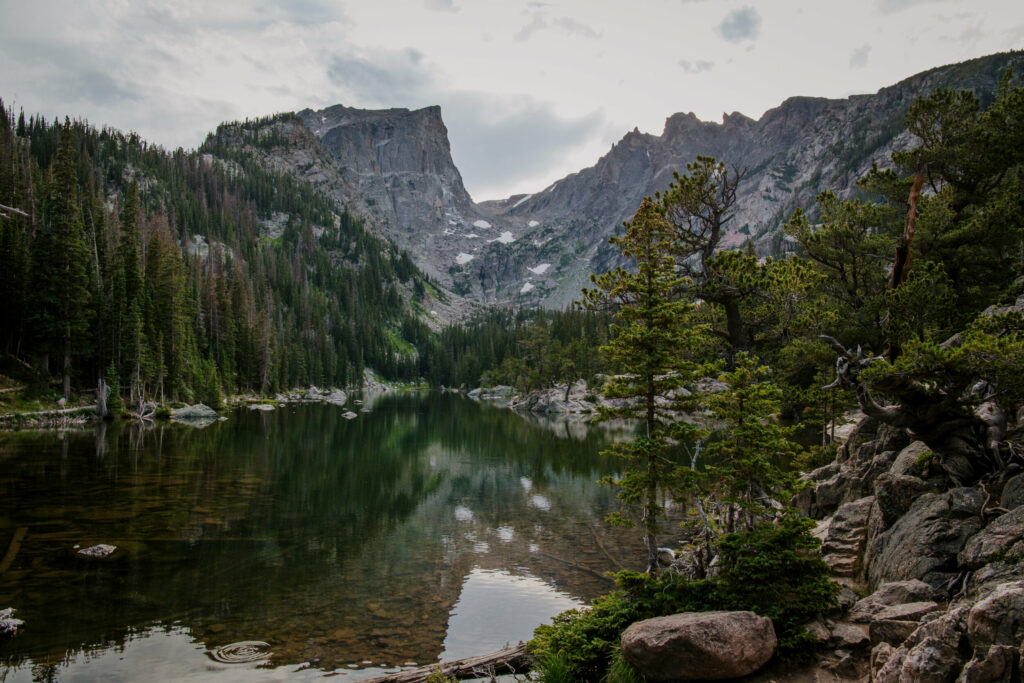
Acadia National Park
Maine
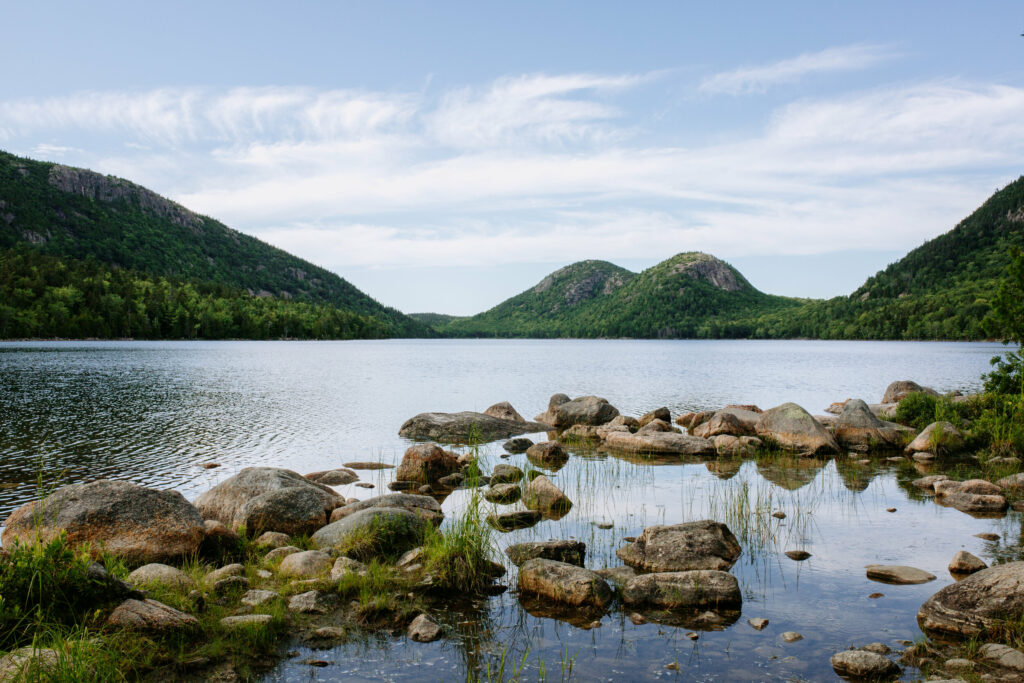
When it comes to planning your national park wedding or elopement,
my number one recommendation is to have fun.
Part of the joy of planning a trip to a national park is in the planning itself: choosing the iconic hikes and views you can check off your bucket list, picking the perfect campground or hotel, and envisioning the days you’ll spend exploring mother nature. That same spirit of excitement should define your experience of planning your wedding in a national park.
If your planning process begins to feel stressful or overwhelming, pause to evaluate why you’re feeling this way and what you can do to alleviate it. Remember to check in with your partner to see if they’re feeling that way, too, and keep communication open as you plan your big day. Make sure you’re planning a day together that you both feel excited about!
I’m using the word “plan” a lot, but keep in mind, you don’t have to plan every little thing. Maintaining some flexibility in your wedding day (as with all travel plans, actually) helps avoid feelings of disappointment when things don’t turn out the way you planned. It lets you pivot and still have a great day. Elopements in particular are prone to day-of changes and shifts. Therefore, even if you’re a planner, build some wiggle room into your schedule. For example, a lot of national parks are located in areas of the country where weather is unpredictable. That means you need to be ready to make allowances for rain or snow.
Planning your national park ceremony should feel as fun and exciting as planning a vacation or a honeymoon. Here’s how to do it:
01.
Consider the scenery you want for your National Park wedding day.
The first thing to consider when planning your ceremony is whether you want the day to take place somewhere new. Your wedding day is a heck of an opportunity to check off a bucket list destination. Or maybe you want somewhere familiar. Exploring your favorite scenery on your special day can feel incredibly intimate and comfortable!
Next, think about the scenery and vibe you identify most with. Do you want to say “I do” under red rock arches, on top of a rocky mountain, in the midst of rolling hills, under giant tree canopies, or on the shore of an alpine lake? Do you love the warm humidity of the South, the crispness of the Northeast, or the cool damp woods of the Pacific Northwest? What terrain appeals most to both you and your partner, and what parks provide it? With 61 national parks to choose from, you’re bound to find one that checks your boxes. And if not (I admit, there are so many choices that it can seem overwhelming!), put your top choices in a hat and pick one at random. Fate brought you two together, why not let it decide your wedding location, too?
02.
Take the seasons into account.
“Lots of parks aren’t accessible in the late fall through spring”
It’s really important to consider the seasons when planning any trip to a national park. But, it’s even more important to do your research when planning a wedding there. There are multiple different aspects to think about when you’re looking into seasonality and booking your big day. Most important of which is whether or not the park is even open. Lots of parks aren’t accessible in the late fall through spring because of snow and ice; sometimes just parts of the park are closed. Usually those higher elevations, which is also where you’ll find the beautiful, panoramic views, and others close altogether.
You should also think about the kind of weather you want to experience on your elopement day. If you want hot, dry weather, even the desert gets cold in winter. Also consider the kind of weather you definitely don’t want. Some people hate humidity, so stay out of the South June through August. Snow can make for a beautiful ceremony, but again, make sure the park you pick for winter weather will be open. The third tip is to do your research to find out which parks are most popular and when (more on that below). Communicate with your partner and decide how flexible (or inflexible) you are on the weather and seasons. If you’ve got a specific scene in mind, it can really dictate not just which park you choose but when you plan your wedding.
03.
Learn about the parks’ popularity in certain months.
Once you’ve narrowed your list of parks and picked a season, do some research to learn more about each park’s peak season and what “peak” means at that location. Yosemite, for example, is swamped in the summertime; nearly 60% of its 5 million annual visitors visit the park June through September. So while you’ll get ideal weather in the summer, you’ll also have to battle the crowds. Of course, most of Yosemite’s visitors spend the majority of their time in the valley, so you can find lesser populated trails and areas of the park to explore more intimately, but it’s still worth thinking about.
There are a few parks in the system that are just going to be busy. Yosemite, Rocky Mountain National Park, Zion, Yellowstone, and the Grand Canyon are all in the top ten. Great Smoky Mountains National Park weighs in at number one with nearly 11.5 million visitors even year. If having a private, secluded celebration is important to you, you can narrow your list to parks with less traffic that aren’t as well-known or as easily accessible. Or, you could plan to celebrate your elopement in a busier park’s off season. Doing so lessens the potential of crowded trails and views and hopes to preserve the peaceful nature for just the two of you.
04.
Research permit requirements for a national park wedding.
“Each park has a unique permitting system”
Picked your park (or at least a few top contenders)? It’s time to deepen your research to look into permit requirements for getting married there. Go to the park’s website and find the Permits & Reservations page (usually under “Plan Your Visit”). There you’ll find details about what they require to get married in the park. Each park has a unique permitting system for weddings, so make sure you do the research for each location to ensure you’ve got the correct, up-to-date information. If you have questions, don’t hesitate to reach out to the contact person the park provides. It’s always better safe than sorry! If you have any questions regarding permitting, be sure to check to make sure you’re doing it right.
The permitting rules at the parks you’re considering could really impact your decision. Some locations, like Rocky Mountain National Park, currently only permit visitors at a few mediocre locations for any type of vow sharing ceremony. Consider the locations the park allows. Keep in mind your wants in regards to group size, scenery, and accessibility. Then decide if there’s even a way to get married in the park that matches your vision.
05.
Make lodging decisions.
A lot of national parks are remote. That means you need to think about where you’ll stay the night before and after your ceremony. If you’re down for camping, you’ll probably have plenty of options in the park. Most national parks offer camper, van, and tent camping options with a varying degree of amenities. If you’d prefer to stay in a real room, you’ll need to do a bit more planning. Some national parks do have hotels on-site, but they tend to book up pretty far in advance (like, more than a year), so plan accordingly.
Another option might be to stay off-site. Some parks are pretty accessible and are within a quick drive of small towns with accommodations. Other parks, however, are pretty far out in the country. If you’ve got plans to wed deep in the park or way out on a trail, it might not be realistic to stay outside the park. If you do decide to make a reservation outside the park, just keep those travel times in mind as you plan the rest of your day.
To summarize:
National parks can provide a breathtaking backdrop for your big day, especially if you’re planning an intimate elopement that puts you and your partner in touch with each other and with nature. Picking the national park where you’ll exchange your vows might even be easier than choosing a traditional venue (and is probably a lot less expensive!), plus it’s arguably more beautiful, more adventurous, and more like you!
Wherever you choose to celebrate your wedding, if you’re doing it outdoors, be sure to show the land the same love you show your partner!
Bonus Tip:
Think outside the box—err, park!
“National park” has a nice ring to it, but this big ole’ country is filled with lots of other gorgeous spaces outside National parks. National forests or Bureau of Land Management (BLM) lands are protected and are still home to big, beautiful views! Since national parks are the most popular of these publicly managed lands, those areas tend to be busy. But, these lesser known lands are just as picturesque and probably have fewer crowds, hikers, and visitors. If you value a quiet, intimate experience in nature, consider BLM or national forests instead.
